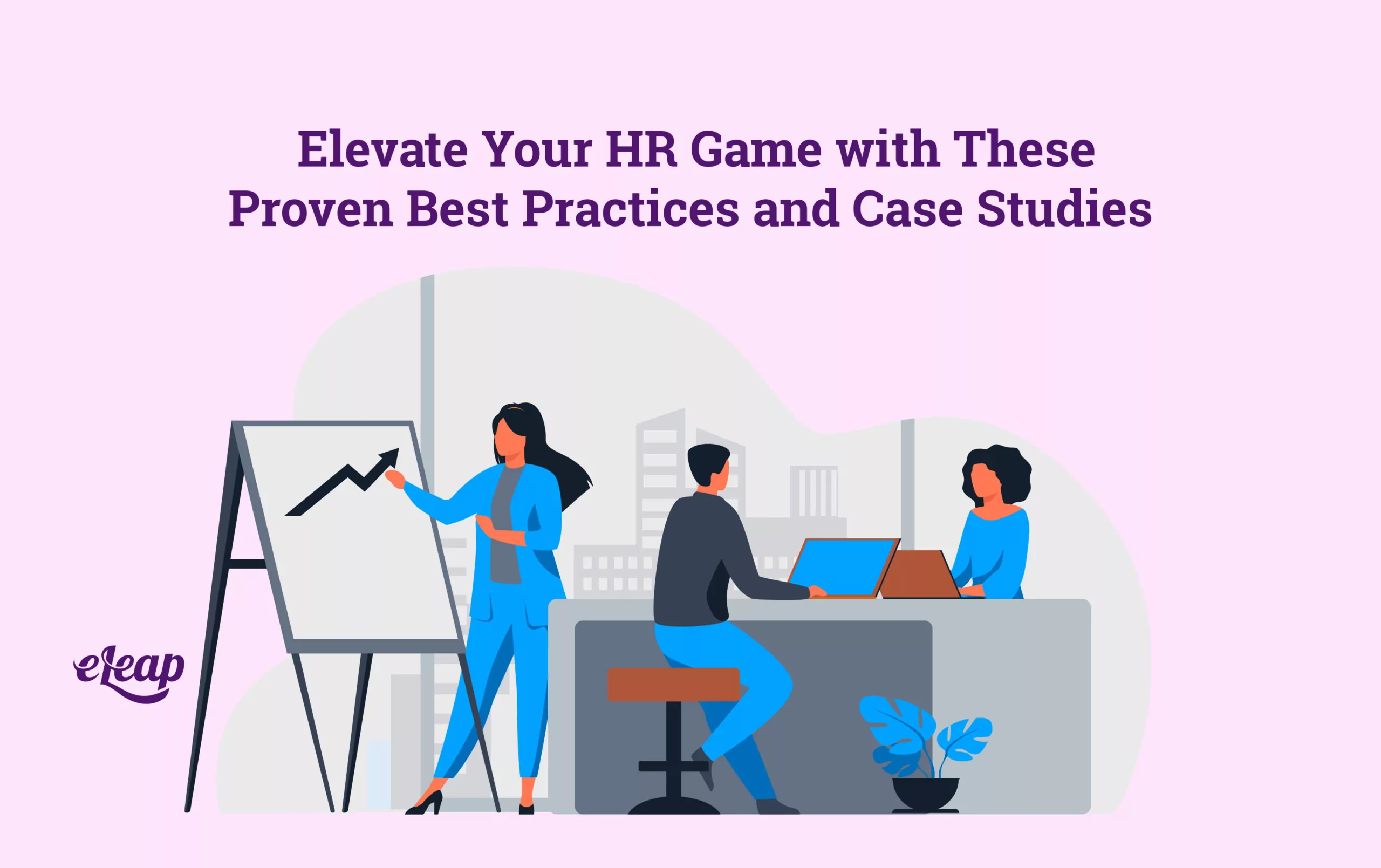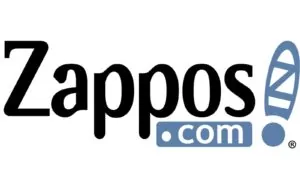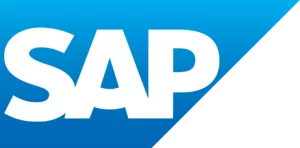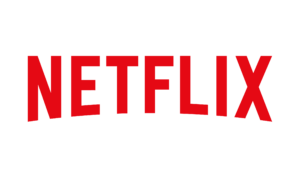Elevate Your HR Game with These Proven Best Practices and Case Studies

HR Best Practices! Have you ever considered the one element within your organization that can spark a revolution, catapult you beyond your competitors, and redefine your journey to success? It’s not a new marketing campaign, a groundbreaking product, or a disruptive technology. The answer lies within your organization’s heartbeat – its people.

What if your human resource function could be more than just a department? What if it could be the game-changer, the secret ingredient that turns the tide in your favor? The present age of business is witnessing an extraordinary evolution where HR is not just supporting the play but becoming the playmaker. Defining the game of organizational success.
In this era, HR is shedding its old skin of being a mere functional unit. It’s metamorphosing into a strategic dynamo, generating ripples of change that permeate every corner of the organization. HR is now in the driver’s seat, navigating the terrain of employee engagement, talent development, performance management, and shaping an empowering organizational culture.
To decode this evolving HR paradigm, we bring you a groundbreaking guide—”Elevate Your HR Game with These Proven HR Best Practices and Case Studies.” This isn’t an ordinary article; it’s an odyssey into the fascinating world of HR. A world populated with transformative HR best practices, real-world case studies, and invaluable insights waiting to be discovered.
Together, we will traverse the full spectrum of strategic HR management, uncovering the secrets that make the difference between good and great. From harnessing untapped talent to crafting the perfect retention strategies. From perfecting the art of onboarding to fostering continuous professional growth, every inch of the HR universe will be explored, unraveled, and understood.
For the bold business leaders ready to ignite a transformation, the seasoned HR professionals seeking the next breakthrough, and anyone standing at the precipice of change. This comprehensive guide has been segmented into six sections that will help unlock the true potential within your organization.
So, gear up to embark on a journey that will forever change how you perceive HR. It’s time to discover the power in your hands and how you can wield it to elevate your HR game. As you turn this page, you’re not just reading an article but kickstarting a revolution. Welcome to the journey of a lifetime!
Section 1: The Power of Strategic Human Resource Management (HRM)
Strategic HRM, also known as SHRM, is a strategic approach to human resource management that aligns with long-term business objectives, enabling organizations to achieve their desired outcomes. It focuses on anticipating future workforce needs and ensuring that the right resources are in place to meet those needs effectively. It goes beyond day-to-day operational tasks and takes a broader, more holistic perspective on managing human capital to drive sustainable business success.
While traditional HRM often focuses on administrative functions and process compliance, strategic HRM goes a step further. It integrates human resource activities and outcomes into the organization’s strategic planning process. This results in HR initiatives designed and executed in line with organizational goals, ensuring the maximum possible contribution to company performance.
This means that the HR department becomes an integral part of the decision-making process instead of just handling recruitment or payroll. The HR function is not seen as separate but as a critical player in the organization’s strategy. Therefore, the strategic HR approach encourages HR professionals to think proactively, plan, and use their initiatives to shape the organization’s path.
For instance, if an organization’s strategy includes expanding its operations to different regions, Strategic HRM involves planning to ensure the organization has the right human capital to support this expansion. This could apply many strategies – from talent acquisition strategies that source new hires from these regions to training and development programs that prepare existing employees for new challenges.
Moreover, strategic HRM is about creating a work environment where employees feel valued, and their contributions are acknowledged. This approach recognizes that employees are not just resources but the driving force behind an organization’s success. Therefore, HR strategies must be designed to motivate, develop, and retain a high-performing workforce.
Strategic HRM requires HR professionals to demonstrate a deep understanding of organizational strategies, business operations, and current industry trends. They must translate this knowledge into effective HR practices supporting the organization’s strategic objectives.
In a nutshell, strategic HRM is a proactive approach to managing people. It focuses on actions that produce results aligned with the organization’s goals. Turning human resource management into a strategic partner rather than an administrative function. It’s about shaping the workforce to deliver upon the vision and mission of the organization and driving sustainable growth through effective people management.
Case Study: Salesforce’s Employee Success Platform
Salesforce, the global leader in CRM software, is another standout when it comes to innovative human resource management practices. In line with its core value of “putting people first,” Salesforce renamed its HR department “Employee Success,” signaling a new, employee-centric approach to HRM.
Recognizing the role of employee engagement in driving business success, Salesforce created an internal social network platform called “Chatter.” This platform was designed to facilitate communication, collaboration, and knowledge sharing among employees, regardless of geographical location.
Chatter allowed employees to create profiles, join groups, participate in discussions, and share files. Additionally, it provided a platform for employees to give and receive recognition. Through the “Thanks” feature, employees could publicly recognize their colleagues for their work, fostering a culture of appreciation and boosting morale.
But Salesforce didn’t stop at creating an internal social network. They took a step further by integrating it with their HR systems. This meant that Chatter wasn’t just a communication tool; it became an integral part of their HR operations. Everything from performance reviews to training programs was integrated into Chatter. This makes HR processes more efficient and enhances the user experience, making HR practices more transparent and employee-centric.
Furthermore, Salesforce leveraged the power of data analytics through its “Work.com” platform, a performance management system that provides real-time feedback, aligns team goals, and promotes ongoing coaching conversations.
Salesforce’s Employee Success approach has paid off handsomely. It regularly features on ‘Great Places to Work’ lists and boasts high employee engagement rates. The firm has also reported that Chatter has significantly improved employee collaboration and knowledge sharing, leading to increased productivity and innovation.
The Salesforce case study is a perfect example of how a strategic, employee-centric approach to HRM, coupled with the intelligent use of technology, can drive employee engagement and business success. It illustrates that when companies invest in their people and provide them with the tools they need to succeed, they create an environment that fosters innovation, productivity, and employee satisfaction.
HR Best Practices for Strategic HRM
Here are some of the HR best practices to follow when implementing strategic HRM:
1. Align HR Practices with Organizational Strategy:
The fundamental principle of strategic HRM is alignment with business strategy. HR strategies and initiatives should always support the overall goals of the organization. This means understanding the organization’s strategic plans and designing HR policies that help achieve these plans.
2. Emphasize Workforce Planning:
Strategic HRM is all about anticipating future needs and planning for them. This involves assessing current workforce skills, identifying future requirements, and developing a plan to close gaps. This could include strategies related to recruitment, training, and development, or even restructuring.
3. Leverage HR Analytics:
Data-driven decisions are at the core of strategic HRM. HR analytics can provide valuable insights into workforce trends, employee engagement, talent management, and more. These insights can be used to make informed decisions and design effective HR strategies.
4. Create a Positive Work Environment:
A positive work environment promotes employee satisfaction, engagement, and productivity, contributing to organizational success. This includes promoting a healthy work-life balance, creating a respectful and inclusive workplace, and acknowledging and rewarding employee achievements.
5. Ensure Effective Communication:
Communication is vital in strategic HRM. This includes communicating the organization’s strategic plans to employees, informing them about HR policies and initiatives, and encouraging open and honest feedback.
6. Develop Strong Leadership:
Leadership plays a crucial role in executing HR strategies and achieving organizational goals. Therefore, strategic HRM should also focus on developing strong, competent leaders who can guide their teams toward the organization’s strategic objectives.
7. Regularly Evaluate and Adjust HR Strategies:
Strategic HRM is a continuous process. It involves regularly evaluating the effectiveness of HR strategies and making necessary adjustments. This ensures that HR practices continue to align with the evolving needs and goals of the organization.
By following these HR best practices, organizations can ensure that their HR practices are strategic and effective and contribute to their overall success. Strategic HRM transforms the HR department from an administrative function to a strategic partner that is key in achieving business objectives.
Section 2: Recruitment and Selection – Getting It Right
The recruitment and selection process is the foundation for creating a productive, engaged, committed workforce. They form how organizations source, attract, screen, and hire new talent.
Recruitment
Recruitment is identifying and attracting potential candidates to fill open positions within an organization. The goal is to create a large pool of applicants with the skills and experience required for the available roles. Recruitment encompasses internal considerations, exploring existing employees for new positions, and external efforts to source fresh talent from outside the organization.
Effective recruitment strategies ensure that there is a diverse range of qualified applicants. This gives the organization the best chance of finding candidates for each role. Recruitment methods can vary widely, including job postings on online job boards, using recruitment agencies, attending job fairs, leveraging social media platforms, and offering employee referral programs.
Selection
Selection is the process of screening the pool of applicants and choosing the most suitable candidate(s) for the job. The aim is to find the individual who is not only competent for the job in terms of skills and experience but also fits the organization’s culture and values.
The selection process often involves several steps, including reviewing applications and resumes, conducting initial screening interviews, performing assessments and tests, carrying out background checks, and conducting formal interviews. Each step is designed to gather more information about the candidates and their suitability for the role.
Together, recruitment and selection form a critical process in strategic HRM. When done effectively, they can result in a strong, competent workforce that drives organizational success. They contribute to the quality of an organization’s human resources, impacting productivity and innovation.
The right recruitment and selection strategies can also enhance an organization’s employer brand, making it more attractive to top talent. This is crucial in today’s competitive job market, where organizations are vying for the best candidates. With effective recruitment and selection processes, organizations can ensure they bring on board the right people who can contribute meaningfully to the organization’s goals and objectives.
Case Study: The Zappos Hiring Model
Zappos, the successful online shoe and clothing retailer, is renowned for its unique company culture and commitment to outstanding customer service. Its recruitment and selection process, heavily focused on cultural fit, has significantly maintained this unique culture and high service standards.
The Zappos hiring model begins with a cultural fit interview, which accounts for 50% of the decision to hire. This interview assesses whether the candidate’s values and personality align with the company’s 10 core values, which include ‘Deliver WOW Through Service,’ ‘Embrace and Drive Change,’ and ‘Be Humble.’ The idea is to ensure that every person they hire will enhance the company culture rather than detract from it.
But Zappos doesn’t stop at the cultural fit interview. They’ve also introduced an innovative step in their selection process – the ‘Zappos Insider’ program. Instead of having candidates apply for specific jobs, they invite them to become ‘Insiders,’ or members of the Zappos community. This gives Zappos and the candidates a chance to get to know each other before a job opening arises. It allows Zappos to build relationships with potential hires and assess their fit over time. When a position opens up, they can select the best fit from their pool of Insiders.
Zappos also offers what’s known as ‘The Offer’ – a policy where newly-hired employees are offered a cash bonus to leave the company after their first week of training if they feel the job isn’t a good fit. This unique approach ensures that only those genuinely passionate about the job and committed to the company’s values stay on.
The results of the Zappos hiring model speak for themselves. The company consistently ranks highly on the ‘Best Companies to Work For’ lists and is recognized for its exceptional customer service. Its employee turnover rate is significantly lower than the industry average, indicating high employee satisfaction and engagement.
The Zappos case study illustrates the importance of recruitment and selection in shaping company culture and driving business success. By prioritizing cultural fit, Zappos has created a distinctive company culture and a loyal, passionate workforce central to its success.
HR Best Practices for Recruitment and Selection
The recruitment and selection process can significantly impact an organization’s performance, culture, and reputation. Thus, effective practices in these areas are of paramount importance. Here are some HR best practices to consider:
1. Clearly Define Job Roles:
A precise and accurate job description is crucial for attracting suitable candidates. This description should outline the responsibilities, skills, experience, and qualifications required for the job and the kind of person that would fit well in the company culture.
2. Leverage Multiple Recruitment Channels:
To attract a diverse pool of qualified candidates, leverage various recruitment channels. These could include online job boards, social media, professional networking platforms like LinkedIn, recruitment agencies, university career centers, and employee referrals.
3. Use Technology:
Many software solutions available today can help streamline the recruitment and selection process. Applicant Tracking Systems (ATS) can help manage job postings, sort through applications. And track candidates throughout the process. Video interviewing technology can also be helpful, especially for initial screening rounds or hiring remotely.
4. Value Cultural Fit:
Skills and experience are critical, but so is a candidate’s fit with your company culture. This means their values, work style, and attitude align well with the organization’s culture. Failing to consider this can lead to high turnover rates, low morale, and decreased productivity.
5. Implement Structured Interviews:
Structured interviews, where each candidate is asked the same questions, can help eliminate bias and make the interview process more objective. It also covers all relevant aspects of the job role, giving a holistic view of the candidate’s suitability.
6. Verify Information:
To ensure the accuracy of the information provided by the candidates, it’s advisable to conduct background checks and verify references. This can provide insights into the candidate’s past work performance and behavior.
7. Keep Communication Open:
From the time they apply to the final hiring decision, candidates should be informed about their status in the hiring process. This keeps candidates engaged and reflects well on your company’s brand.
8. Review and Improve:
Regularly review your recruitment and selection processes to identify areas that can be improved. Use data and feedback to make informed adjustments.
These HR best practices can guide your organization toward a more effective and efficient recruitment and selection process, leading to a higher caliber of hires, improved employee retention, and, ultimately, a stronger workforce.
Section 3: Employee Onboarding – First Impressions Matter
Employee onboarding is a crucial step in the HRM process, often regarded as the first impression that an organization makes on its new hires. It refers to integrating new employees into the organization and equipping them with the necessary knowledge, skills, and behaviors to become effective team members.
Effective onboarding processes go beyond simple orientation programs; they aim to accelerate the new hires’ understanding of the organizational culture, job role, and expectations. This helps new hires feel welcome and supported, enabling them to quickly become productive and engaged team members.
Best Employee Onboarding Practices
Here are some critical components of a successful onboarding process:
1. Preparation Before the First Day:
Onboarding begins even before the new hire’s first day. This may involve sending a welcome email detailing what they can expect on their first day, providing them with the necessary paperwork, or giving them access to relevant platforms or systems.
2. First-Day Welcome:
Making the new hire feel welcome on their first day is crucial. This could involve a tour of the office, introductions to their team, and a welcome lunch or meeting with their manager. They should also be provided with all the necessary tools and resources to do their job.
3. Orientation:
This involves familiarizing new hires with the organization’s mission, vision, values, and culture. It may also include briefings on company policies, employee benefits, safety regulations, and any relevant systems or procedures.
4. Job-Specific Training:
New hires should receive training specific to their job role. This helps them understand their responsibilities and expectations and equips them with the necessary skills to perform their job effectively.
5. Assign a Mentor or Buddy:
Assigning a mentor or buddy can help new hires feel supported as they navigate their new role and environment. This person can answer any questions they might have and provide guidance and support.
6. Check-Ins and Feedback:
Regular check-ins during the initial few months can help address issues or concerns early on. This also allows new hires to give feedback (download the free onboarding experience survey) on their performance and make them feel valued and engaged.
7. Long-Term Integration:
Onboarding should not be viewed as a one-time event but a long-term process that helps new hires fully integrate into the organization. This might involve ongoing training and development opportunities. Regular feedback and performance reviews, and initiatives to foster relationships and engagement within the team.
An effective onboarding process can significantly impact a new hire’s performance, engagement, and retention. It can help new employees feel valued and engaged from day one, reducing the time it takes to reach full productivity and increasing their likelihood of staying with the organization long-term. It’s, therefore, worth investing time and resources to ensure your organization’s onboarding process is as effective as possible.
Case Study: SAP’s Buddy Program
SAP, the global leader in enterprise application software, has implemented an innovative approach to employee onboarding through its Buddy Program. Recognizing the importance of personal connections and support during the early stages of employment, SAP pairs each new hire with a “buddy.”
The Buddy Program is a crucial part of SAP’s onboarding process, designed to facilitate the new hire’s integration into the SAP environment. The ‘buddy’ is typically a more experienced employee who understands the company culture, systems, and processes well. Their role is to help the new hire navigate their new work environment and answer any questions.
But the Buddy Program at SAP goes beyond the usual guidance and support. It’s designed to build lasting relationships and foster a sense of belonging among new employees. Buddies often become the new hire’s first friend in the company, fostering a sense of community and belonging right from the start.
The buddy also offers professional guidance, helping the new hire understand their role, responsibilities, and how they fit into the larger organization. They can offer insights into team dynamics, company culture, and unwritten rules that may not be covered in formal training sessions.
Furthermore, the program is mutually beneficial. While the new hire receives guidance and support, the buddy gets an opportunity to develop their leadership and mentoring skills.
SAP’s Buddy Program has been a resounding success, with positive feedback from new hires and buddies. The program has significantly improved new hire engagement, performance, and retention. New hires report feeling more welcome and supported, helping them transition smoothly into their new roles and reach productivity more quickly. The program also promotes a culture of collaboration, learning, and mentorship, aligning with SAP’s core values and strategic goals.
This case study highlights the importance of personal support and connections in onboarding. Organizations can enhance their onboarding process by implementing similar buddy or mentorship programs, fostering a supportive culture, and improving new hire outcomes.
Section 4: Training and Development – The Path to Performance
Training and development are essential components of strategic HRM that significantly contribute to an organization’s success. They encompass various learning opportunities and programs provided to employees to enhance their skills, knowledge, and performance.
Training usually refers to teaching employees the basic skills they need to perform their job effectively. It is often specific to the job role and focuses on the organization’s immediate needs. This might involve on-the-job training, e-learning modules, or workshops and seminars.
On the other hand, development tends to be more long-term and broader in scope. It focuses on helping employees grow and advance in their careers. This might involve leadership training, mentorship programs, further education and certification opportunities, or cross-functional training.
Training and development serve several purposes in an organization:
- Improve Employee Performance: By equipping employees with the necessary skills and knowledge, they can perform their job more effectively. This can lead to increased productivity, quality of work. And customer satisfaction.
- Increase Employee Engagement and Satisfaction: Employees who receive regular training and development opportunities often feel more valued and engaged. This can lead to increased job satisfaction, motivation, and retention.
- Facilitate Succession Planning: By developing employees’ skills and preparing them for higher-level roles, organizations can ensure they have a pool of qualified candidates ready for succession.
- Enhance Innovation and Creativity: Training and development can stimulate new ideas and innovative thinking. This can help an organization stay competitive in an ever-changing business environment.
- Improve Organizational Performance: Enhancing individual performance, training, and development can contribute to overall organizational performance. This can improve financial performance, customer satisfaction, and market share.
To be effective, training and development should be strategic, aligning with the organization’s goals and the needs of the employees. It should be an ongoing process, responding to the organization’s evolving needs and the employees’ career aspirations. This requires regular assessments of organizational and individual training needs, implementation of diverse training and development initiatives, and evaluation of effectiveness.
Training and development are investments in the organization’s most valuable asset – its people. By helping employees reach their full potential, they contribute to the organization’s success and competitiveness in the long term.
Case Study: AT&T’s Future Ready Initiative
AT&T, one of the world’s largest telecommunications companies, has long recognized the importance of continuous learning and development in maintaining a competitive edge. To stay ahead in an industry characterized by rapid technological change, AT&T launched a ‘Future Ready‘ initiative – an ambitious, multi-year effort to transform its workforce.
The Future Ready initiative is a $1 billion web-based, multi-year effort that includes online courses, collaborations with universities. And a career center that allows employees to understand the specific skills they need for their jobs now and in the future. The program was developed to encourage AT&T’s 250,000 employees to continuously learn and equip them with the skills required for the digital era.
The initiative provides a wide range of training and development opportunities, including:
- Online Courses: AT&T partnered with online education platforms to offer data science, cybersecurity, and machine learning courses.
- Degree Programs: In collaboration with universities, AT&T offers tailored master’s degree programs in computer science and business analytics.
- Career Tools: Through an internal portal, employees can access a self-service tool to see the roles available at AT&T, the skills required for these roles. And the learning opportunities available to acquire these skills.
AT&T’s Future Ready initiative has proven to be an industry-leading approach to workforce development. By encouraging and facilitating continuous learning, AT&T has equipped its employees with the skills needed for today’s digital age. This enhances individual performance and job satisfaction and ensures AT&T’s workforce remains competitive and adaptable to change.
This case study exemplifies how strategic investment in training and development can enable an organization to navigate industry disruption and maintain a competitive edge. By providing employees with the resources and opportunities to develop their skills continuously, organizations like AT&T can ensure they are ‘future-ready’ – equipped to adapt and thrive in the modern organizational landscape.
Best Practices for Training and Development
Implementing effective training and development programs is a strategic investment in your organization’s future success. Here are some HR best practices to help ensure these programs are as impactful as possible:
1. Align with Business Objectives:
Training and development initiatives should align with your organization’s goals and strategies. This ensures that the skills and competencies being developed will contribute directly to business success.
2. Assess Needs Regularly:
Conduct regular needs assessments to understand what skills and competencies are currently lacking and which will be necessary for the future. This involves talking with employees, managers, and leaders to identify gaps and anticipate future needs.
3. Blend Learning Methods:
Combine different learning methods to cater to different learning styles. This could involve a mix of in-person workshops, online courses, on-the-job training, coaching, and mentoring. Incorporating a variety of methods can make learning more engaging and effective.
4. Leverage Technology:
Today’s learning management systems (LMS), like eLeaP, can provide a platform for hosting and tracking various learning initiatives. These systems can offer many learning opportunities. From eLearning courses to webinars, forums, and resources. They also allow for easy tracking of employee participation and progress.
5. Create Individual Development Plans:
Tailor learning initiatives to individual needs and career goals. This not only makes learning more relevant but also empowers employees to take ownership of their development.
6. Provide Opportunities for Application:
Learning is solidified when it’s applied. Ensure employees have opportunities to practice what they’ve learned on the job. This might involve giving them tasks that require new skills or encouraging them to share their new knowledge with their team.
7. Measure Effectiveness:
Use metrics and feedback to evaluate the effectiveness of training and development initiatives. This can help you understand what’s working and what needs to be improved. Metrics might include participation rates, satisfaction scores, changes in performance, and business results.
8. Promote a Learning Culture:
Foster an environment where continuous learning is valued and rewarded. This could involve recognizing and celebrating learning achievements, promoting knowledge sharing, and encouraging curiosity and exploration.
These HR best practices can guide your organization toward a more strategic and effective approach to training and development. Investing in your employees’ growth and development can boost their performance and engagement, drive innovation, and ensure your organization’s long-term success.
Section 5: Employee Engagement and Recognition – The Human Touch
Employee engagement and recognition are critical components of a successful HRM strategy. They involve creating an environment where employees feel valued, connected. And motivated to contribute their best efforts to the organization.
Employee engagement
Refers to an employee’s emotional commitment to their organization and its goals. Engaged employees are not just satisfied with their jobs. They are motivated and committed, willing to put in extra effort for the organization’s success.
Research consistently shows that high levels of employee engagement can lead to better business outcomes, including improved productivity, customer satisfaction, and financial performance. It can also reduce turnover and absenteeism.
Recognition, on the other hand, involves acknowledging and appreciating employees’ efforts and achievements. This can help employees feel valued and appreciated. Boosting their motivation and engagement. Recognition can take many forms, from formal awards and bonuses to simple words of appreciation.
Here are some critical strategies for enhancing employee engagement and recognition
- Communicate Regularly and Transparently: Clear, open communication can help employees feel connected and valued. This might involve regular team meetings, updates from leadership, and open-door policies.
- Provide Meaningful Work: Employees are more likely to be engaged when they find their work meaningful and aligned with their values and goals. This might involve aligning individual roles with the organization’s mission and goals and ensuring employees understand how their work contributes to the big picture.
- Offer Opportunities for Growth and Development: Providing opportunities for learning and career development can boost engagement by showing employees that the organization is invested in their growth. This might involve training programs, mentorship, and opportunities for advancement.
- Foster a Positive Work Environment: A positive, supportive, and inclusive work environment can help employees feel more comfortable and motivated. This might involve promoting teamwork, diversity and inclusion, work-life balance, and well-being.
- Recognize and Reward Achievements: Regularly recognizing and rewarding employees’ efforts and achievements can help them feel appreciated and valued. Recognition should be timely, specific, and meaningful to the recipient.
- Seek and Act on Feedback: Regularly seek employee feedback and take action based on this feedback. This shows employees that their opinions matter and can help identify opportunities for improvement.
Employee engagement and recognition are not just nice-to-haves but critical for organizational success. Organizations can boost employee morale and motivation by implementing effective strategies in these areas, leading to improved performance and outcomes.
Case Study: The Adobe Check-in
Adobe, the multinational software company, replaced its annual performance reviews with “Check-Ins,”. Where employees and managers have regular, informal conversations about performance and development.
This ongoing feedback system promotes engagement, continuous improvement, and a growth mindset. It also gives employees a sense of being valued and heard.
Section 6: Employee Retention – Holding on to Your Best
Employee retention refers to an organization’s ability to keep its top talent. It’s a critical aspect of strategic human resource management, given the high costs associated with turnover – direct costs like recruitment and training and indirect costs such as lost productivity and lower morale.
Organizations with high retention rates often have higher employee satisfaction, productivity, and performance. They also tend to have strong employer brands which attract top talent. Conversely, organizations with high turnover rates may struggle with instability, low morale, and reduced performance.
Several key factors contribute to high employee retention:
- Competitive Compensation and Benefits: Offering fair and competitive pay and benefits is fundamental to employee retention. But compensation is more than just salary. It also includes benefits like health insurance, retirement plans, paid time off, and work flexibility.
- Opportunities for Career Development: Employees are more likely to stay with an organization that offers opportunities for growth and advancement. This can include professional development, training programs, career planning services, and opportunities for promotion.
Recognition and Reward:
Regularly recognizing and rewarding employees for their achievements can enhance job satisfaction and loyalty. Recognition can be formal, like a structured rewards program, or informal, like a personal note of thanks.
- A Positive Work Environment: A healthy, inclusive, supportive work environment can significantly increase employee retention. This includes work-life balance, positive team dynamics. Effective leadership, and a culture of respect and fairness.
- Engagement and Purpose: Employees engaged in their work and feel a sense of purpose are likelier to stay. Ensuring employees understand their role, how it contributes to the organization’s goals. And why it matters can boost engagement and retention.
- Employee Well-being: Caring for employees’ physical, mental, and emotional well-being is increasingly vital for retention. This might involve initiatives like wellness programs, mental health support, and flexible working arrangements.
Retention strategies should be proactive, not reactive. And tailored to your workforce’s unique needs and desires. Regularly seeking feedback and acting on it can help you stay attuned to these needs and identify any potential issues before they lead to turnover.
By focusing on employee retention, organizations can save costs and build a stable, satisfied, high-performing workforce that contributes to long-term success.
Case Study: The Netflix Culture
Netflix, the popular streaming platform, boasts a high retention rate, thanks in part to its distinctive corporate culture. Netflix follows a “freedom and responsibility” culture where employees have lots of freedom and are expected to act in the company’s best interests. This approach empowers employees, promoting satisfaction and retention.
Conclusion
Sound HR practices aren’t just a departmental necessity but a strategic imperative that fuels an organization’s success. We can all elevate our HR game by drawing on HR best practices. Learning from industry case studies, and embracing a culture of continuous improvement.
Like the complex gears of a finely-tuned machine, the elements of HR – strategic management, recruitment, onboarding, training, engagement, and retention – must work in harmony. Only then can an organization unlock its full potential, empowering people to drive innovation, growth, and long-term success.
Through this detailed exploration, we hope you are inspired and equipped to elevate your HR practices. Leading to a stronger, more vibrant, and highly successful organization.





